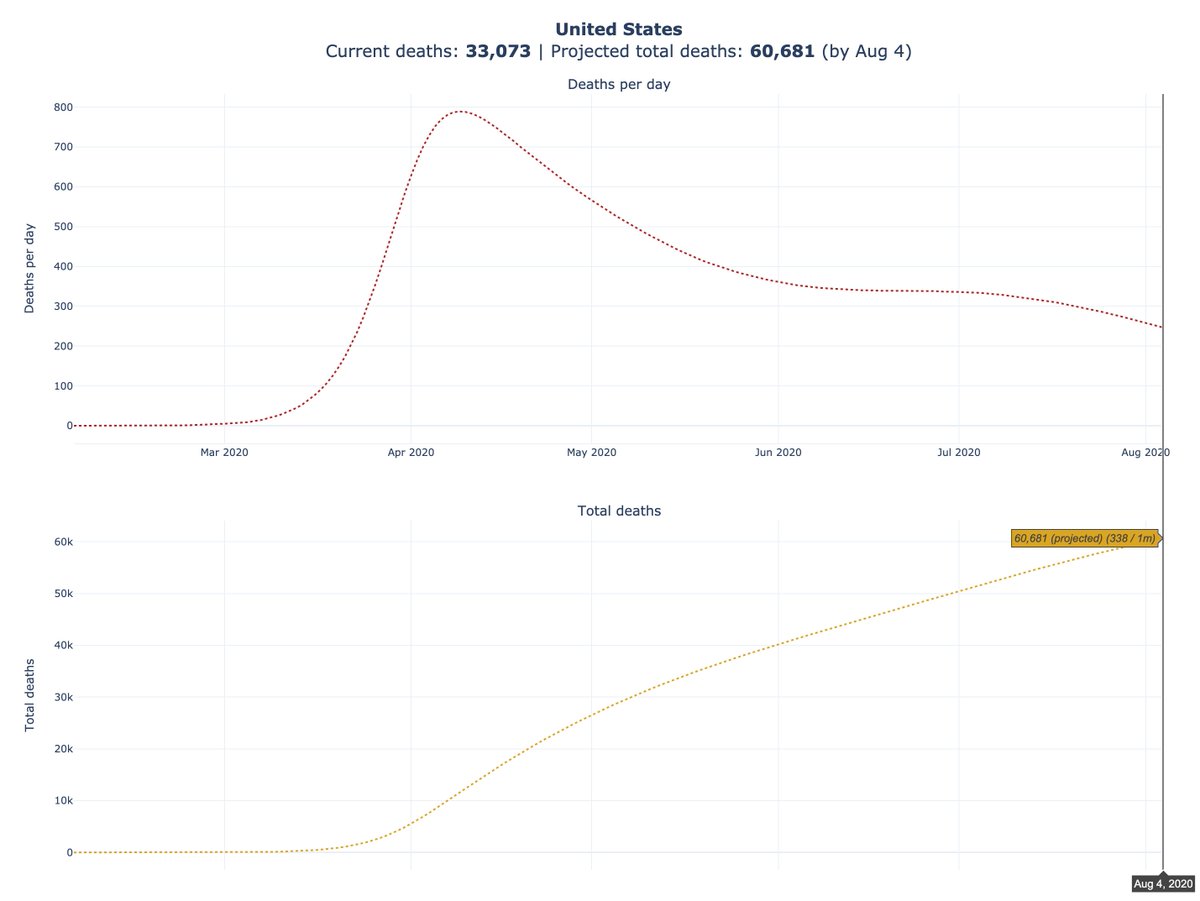
As of today there have been more than 90,000 confirmed deaths due to Coronavirus in the USA, despite But how important was the timing of the introduction of nationwide social distancing?
To examine this, Youyang Gu, who is a data scientist from New York, ran an epidemiological model – which incidentally is far more accurate than the US government’s own model – for the epidemic in the US, but under different assumptions about the timings of the introduction of social distancing.
These graphs summarise what happens if restrictions had been introduced a week earlier than actually happened:

And this is what happens if restrictions had been delayed by an additional week, compared to what actually occurred:

So if restrictions had been introduced a week earlier, there would currently have been around 35,000 deaths as of today – some 55,000 fewer than have actually occurred. But delaying things an extra week would have meant around 250,000 current deaths, an increase of 160,000 on the actual value.
Differences in the projections for the numbers of fatalities by August are even greater: in the two scenarios above, the prediction is for around 60,000 and 455,000 deaths respectively. These compare with a forecast of around 135,000 based on the true timings of restrictions.
There’s a well-known saying that a week is a long time in politics. This was never more true than in the midst of the current pandemic.
It’s fair to add some comments on the comparisons above:
- As stressed, these comparisons are inevitably based on model forecasts, not actual numbers, though the model used has proved accurate in tracking the trajectory of the epidemic so far.
- The comparison is based on US numbers, though the principle of the importance of the timing of response to the epidemic is equally valid elsewhere.
- The models assume that the restrictions that have been introduced will be maintained in the future. If social distancing is relaxed, it’s likely that the numbers will grow at a faster rate than predicted here.
- Restrictions by themselves can contain an epidemic, but they cannot make it go away. And, since contagion rates are reduced once more people are infected, the more successful restrictions are in containing an epidemic, the more vulnerable the population is to further outbreaks once those restrictions are removed.
- It’s also well-understood that there are costs, both in terms of economics and non-Coronavirus fatalities, to maintaining strong social-distancing measures. A fair comparison should really include these additional costs.
